Just before George Washington died at Mount Vernon on December 14, 1799, doctors only made things worse by draining 40 percent of his blood.
While much is known about the life of America’s first president, far less is understood about George Washington’s death.
In December 1799, America’s most famous founding father suddenly fell ill. At first, it seemed to be no cause for alarm. By that point, Washington had already survived an impressive number of diseases, including malaria, smallpox, tuberculosis, dysentery, tonsillitis, and pneumonia. So when he complained of a sore throat, no one expected it to be the end.
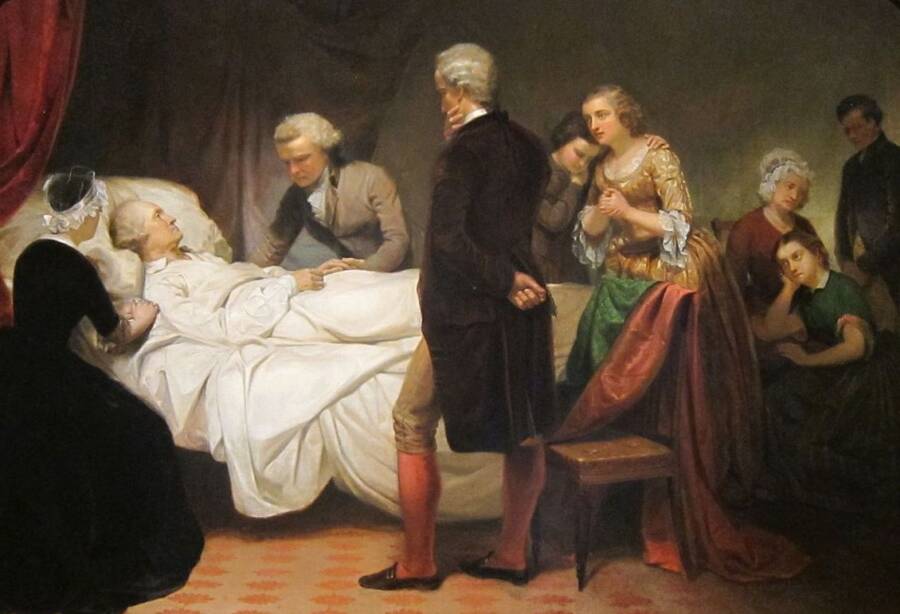
Junius Brutus Stearns/Dayton Art InstituteThe cause of George Washington’s death remains unclear, but there’s no question that his final hours were far more agonizing than they needed to be.
But in a matter of days, Washington would be dead at age 67. So was the problem really a sore throat? And if not, how did George Washington die? No one knows for certain, but this may have been a case where the treatments were actually worse than the disease itself.
While doctors had quickly rushed to Washington’s Mount Vernon home, they only had 18th-century treatments at their disposal.
And sadly, these methods made George Washington’s death an agonizing affair that remains disturbing more than two centuries later.
The Final Years That Preceded George Washington’s Death
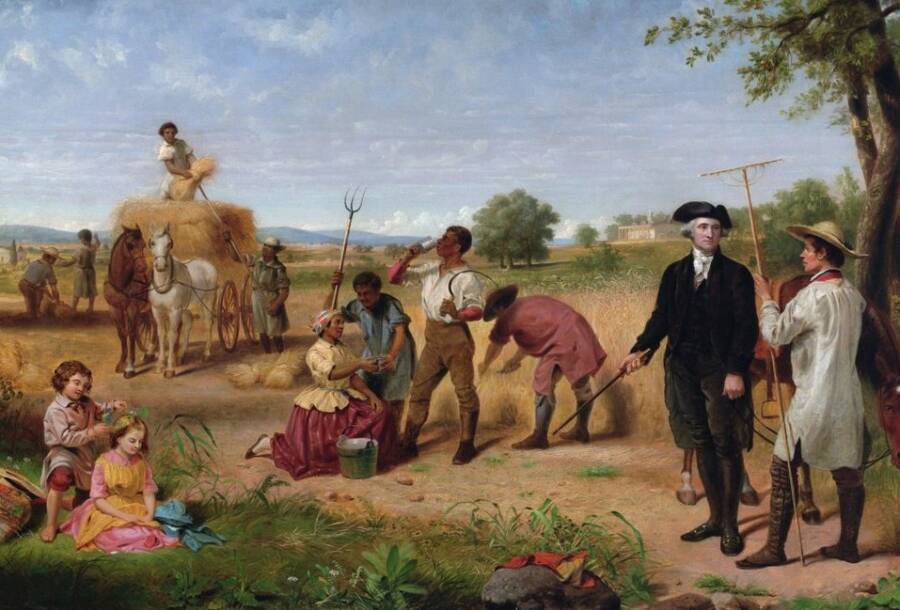
Junius Brutus Stearns/Virginia Museum of Fine ArtsAn 1851 painting of George Washington on his Mount Vernon plantation.
George Washington’s death came after a lifetime of serving his country. Washington had led armies during the Revolutionary War, helped steer the Constitutional Convention, and served as the nation’s first president.
By 1796, he was nearly done with his second presidential term — and he was ready to retire. On September 17, 1796, Washington announced that he would not seek a third term. Instead, he would return to his Mount Vernon estate.
There, Washington spent his days managing the five farms, 800 animals, and 300 slaves under his purview. He woke before sunrise, responded to letters, and spent much of his time on horseback. He checked in with farm managers, inspected his gardens, and visited his stables.
When a friend tried to convince Washington to come back to politics, he refused. He expressed his “ardent wishes to pass through the vale of life in retiremt, undisturbed in the remnant of the days I have to sojourn here.”
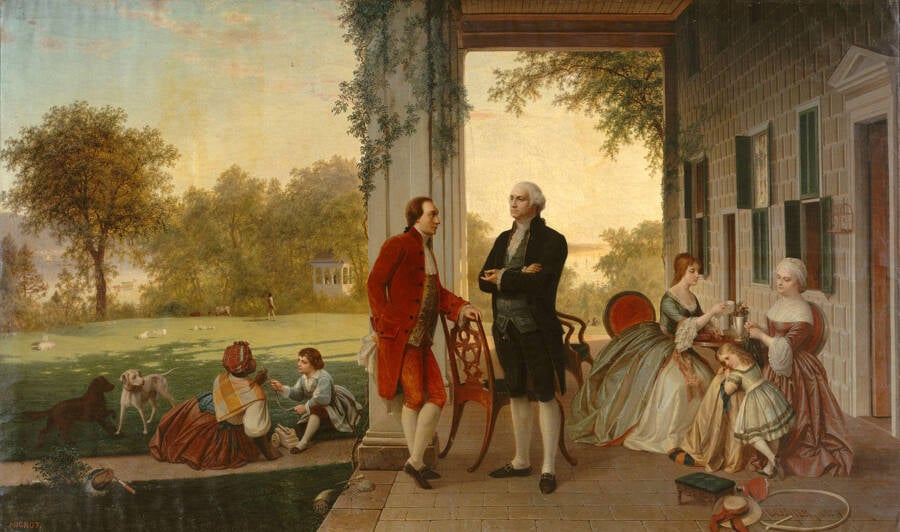
Wikimedia CommonsGeorge Washington and Marquis de Lafayette at Mount Vernon after the war. Painting by Thomas Prichard Rossiter. 1859.
Plus, Washington wrote, politicians “regard neither truth nor decency; attacking every character, without respect to persons – Public or Private, – who happen to differ from themselves in Politics.” By that point in his life, he was clearly done with partisan bickering and infighting.
But Washington was still a public figure even when he tried to live a more private life. He and his wife Martha received hundreds of guests — including strangers — who wanted to meet the Revolutionary War hero.
At one point, Washington wrote in his diary: “I am alone at present… Unless someone pops in, unexpectedly — Mrs. Washington and myself will do what I believe has not been done within the last twenty years by us — that is to set down to dinner by ourselves.”
But despite Washington’s busy schedule, he remained lively and energetic well into his 60s. And by the end of 1799, it seemed that Washington — then 67 years old — might live to see the beginning of the 19th century. His wife, Martha, certainly believed so. She noted that her husband had vowed “not to quit the theatre of this world before the year 1800.”
Ultimately, George Washington’s death would come just days before the new century began.
How Did George Washington Die?
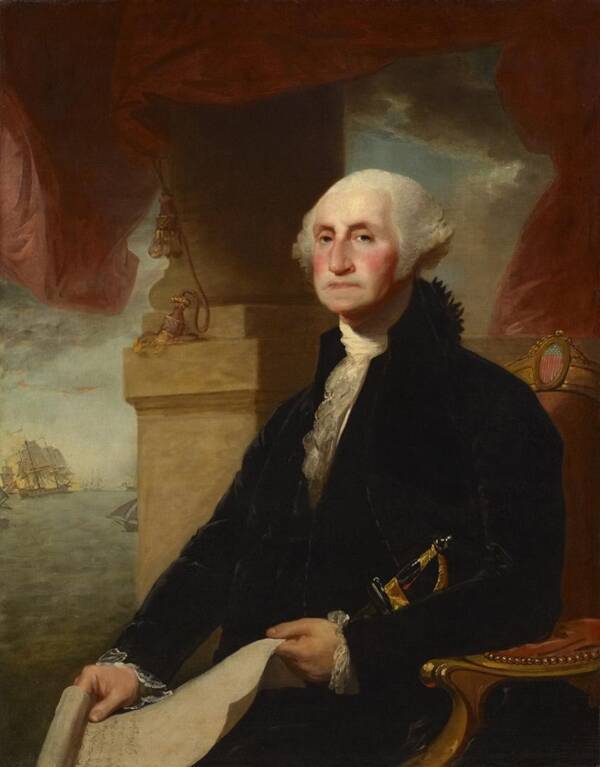
Wikimedia CommonsA Gilbert Stuart portrait of George Washington, two years before his death.
On December 12, 1799, Washington rode through rain, sleet, and snow to tend to the Mount Vernon estate. He returned home late to find that his dinner guests had already arrived. To avoid a breach in decorum, Washington joined them for the meal — while still wearing his wet clothes.
The following day, freezing temperatures and snow didn’t stop Washington from making his usual rounds. But as Washington tended to the estate, he developed a bad sore throat. This grew worse as the day progressed. That evening, he was unable to read the newspaper aloud to Martha.
Washington went to bed on December 13th with a hoarse voice and a raw throat. He awoke the next morning with trouble breathing.
Doctors descended on Mount Vernon in hopes of reviving the former president. In the next few hours, they would try — again and again — to save Washington’s life. But they only made the situation worse.

Robert Shenk/Mount VernonThe bedroom where George Washington died in December 1799.
The three physicians on the scene attempted to cure Washington with treatments that were common during the 18th century. In particular, they leaned heavily on bloodletting — the withdrawal of blood which was meant to cure a disease. By the time George Washington died, his physicians had removed 80 ounces of his blood — or about 40 percent of his body’s total volume.
And bloodletting wasn’t the only treatment that they tried. One doctor recommended a dose of mercurous chloride and a tartar emetic, which caused violent vomiting. Another doctor administered an enema. Dr. James Craik, the physician general for the United States Army, applied a toxic tonic directly on the president’s throat, which caused blistering.
To make matters worse, the doctors also swabbed his throat with a mixture of dried beetles. In addition, they instructed him to drink a blend of butter, molasses, and vinegar — which nearly suffocated him.
By late afternoon, after Washington’s fourth bloodletting in 12 hours, the weakened former president was struggling for air. He turned to Craik and said, “Doctor, I die hard, but I am not afraid to go; I believed from my first attack that I should not survive it; my breath can not last long.”
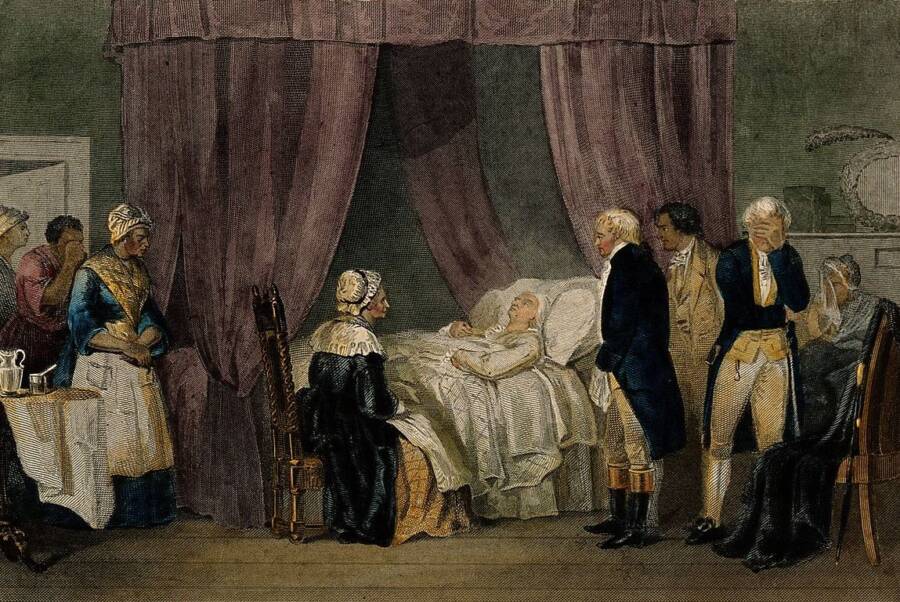
J. Rodgers/Wellcome ImagesA colored engraving showing George Washington’s death.
George Washington rose from his bed for the final time around 5 p.m. Washington told Tobias Lear, his secretary, “I find I am going… I believed from the first that the disorder would prove fatal.”
The president asked Lear to “arrange my accounts and settle my books, as you know more about them than anyone else.”
After reviewing his will, Washington returned to bed. The doctors applied blisters to the president’s feet and legs at around 8 PM.
About two hours later, Washington gave Lear instructions for his burial. The former president feared being buried alive, so he told Lear, “Do not let my body be put into the vault in less than three days after I am dead.”
Lear, who found himself unable to speak, simply nodded his head. Washington asked, “Do you understand me?” When Lear finally said yes, Washington uttered his last words: “Tis well.”
Then, at some point between 10 and 11 PM on December 14, 1799, George Washington died. Martha Washington, standing at the foot of his bed, repeated what her husband had said before his death: “Tis well.”
The Mystery Behind What Caused George Washington’s Death

Pavel Petrovich Svinin/The Metropolitan Museum of ArtThe tomb at Mount Vernon where mourners buried George Washington.
The exact cause of George Washington’s death remains a mystery. But there is no shortage of theories, and the question has been debated for centuries.
Dr. Howard Markel, the director of the Center for the History of Medicine at the University of Michigan, noted that arguments about the cause of George Washington’s death started “two minutes after George Washington died.”

Since then, various diagnoses have been offered for Washington’s throat problem. He could have had an abscess in his throat, or pneumonia, or epiglottitis — which Markel describes as “an infection of the epiglottis at the back of the throat from a bacterium so severe that it basically strangles you.”
“Doctors love to argue about what the greats from the past history have died of,” Markel said. “And it’s a great argument because you can never really prove it, so the argument goes on and on and on.”
As for the most likely explanation, Markel believes that Washington was suffering from “acute bacterial epiglottitis.” Another doctor, White McKenzie Wallenborn of the University of Virginia, agreed, describing Washington’s illness as a “classic ‘textbook’ case of acute epiglottitis.”
But regardless of what disease George Washington had, his doctors probably didn’t help him at all. “If the disease itself didn’t get George Washington,” Markel said. “the doctors certainly did.”
Of all the treatments that the doctors suggested, Markel theorizes that the one they decided against might have actually helped — a tracheotomy. This would’ve involved making a small incision in the former president’s windpipe to relieve an obstruction to his breathing. The youngest doctor present had suggested this but had been outvoted by the others.
Ultimately, no one was able to save Washington — and he was laid to rest in his family tomb on December 18, 1799. As news of George Washington’s death spread across the country, a period of public mourning was instituted. This would last until his next birthday, February 22, 1800.
It was immediately clear that his death had a major impact on countless people in the nation. Major General Henry Lee would later give a memorable eulogy before Congress, remembering George Washington as such: “First in war, first in peace, and first in the hearts of his countrymen.”
Indeed, the United States never forgot its first president.
Now that you’ve read about the death of George Washington, learn more facts about America’s first president. Then, discover Washington’s dark side through the eyes of Ona Judge, a slave who escaped from Washington’s plantation.





